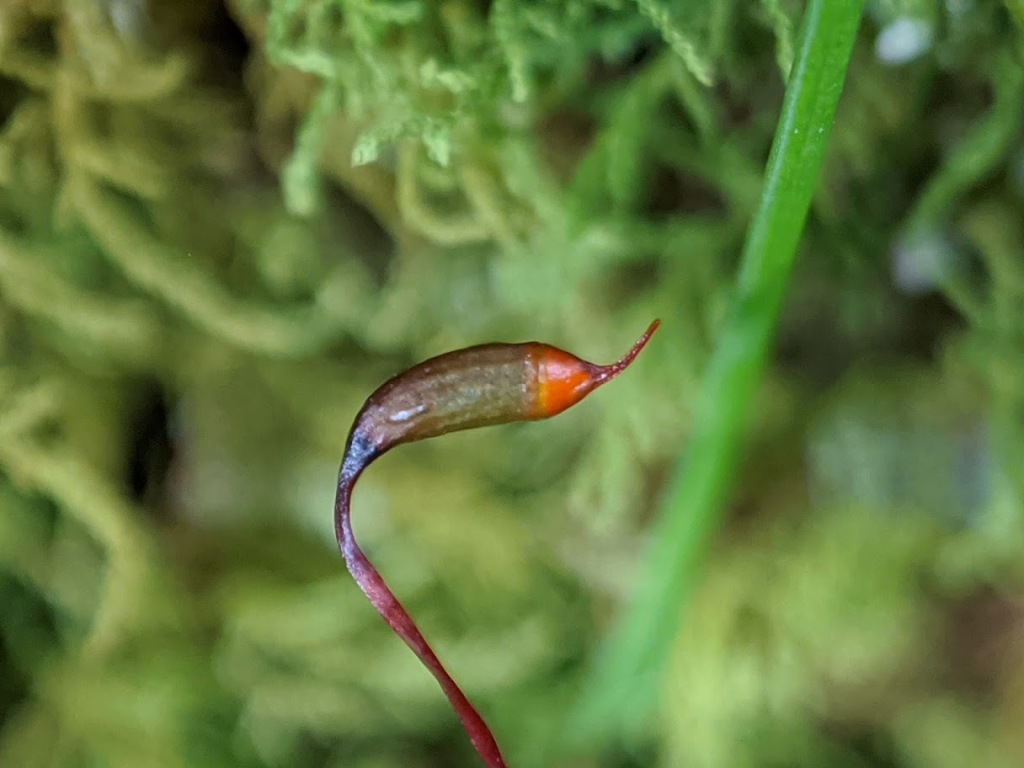Thuidiopsis sparsa
(Hook.f. & Wilson) Broth.Dioicous. Loose or compact wefts or mats on soil, rocks, logs and tree bases. Stems to c. 6 (–11) cm long, branching mostly bipinnately, occasionally pinnately or irregularly; branches to c. 0.7 cm long. Stem leaves strongly incurved from a patent base when moist or dry, cordate-ovate, deltoid-ovate, triangular—ovate, deltoid or broadly triangular, to 1 (–1.5) mm long, to 0.8 (–1) mm wide, smooth or deeply plicate at base; apices acuminate; costae subpercurrent; margins entire, crenulate or serrulate, usually recurved near base, otherwise plane; cells isodiametric to slightly elongate, c. 5–12 μm wide, pluripapillose or partly unipapillose toward apex. Branch leaves erecto-patent when moist, appressed to loosely imbricate and strongly incurved from patent base when dry, broadly ovate to ovate or ovate-oblong, to c. 0.3 mm long, concave; apices mostly acute, occasionally weakly acuminate, obtuse or rounded; costae subpercurrent; margins crenulated to serrulate; cells isodiametric or nearly so, 5–10 μm wide, pluripapillose or partly unipapillose toward apex. Setae to c. 2 (–2.5) cm long, orange-red, orange or brownish, smooth. Capsules mostly inclined to pendent, occasionally almost erect, ovoid, narrowly ellipsoid, obloid or cylindric, weakly or strongly curved, to c. 2.5 mm long. Calyptrae cucullate, usually with a few hairs at base, occasionally glabrous.
Wim, GleP, VVP, VRiv, GipP, OtP, WaP, Gold, CVU, GGr, DunT, NIS, EGL, EGU, WPro, HSF, HNF, OtR, Strz, MonT, HFE, VAlp.
Two varieties, both in Victoria.
 Spinning
Spinning
